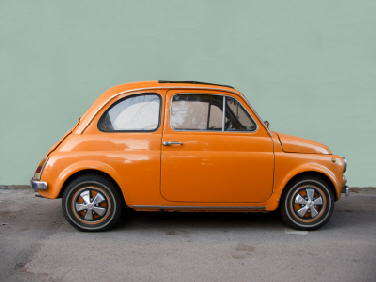Recent Articles
Popular Makes
Body Types
What is a Crumple Zone?

Crumple zones are structural safety features designed to absorb the energy of an impact during a crash. The most common crumple zone areas are located at the front and rear of the car. These crumple zones are designed primarily to protect passengers from rear-end and head-on collisions. The purpose of the crumple zone is to absorb crash energy to prevent energy from intruding into the passenger compartment of the automobile.
Crumple zones operate by allowing sections of the body of the automobile to collapse when a certain stress threshold is met. The best correlation would be the crushing of an empty beverage can. While the can is of a sturdy design and can withstand considerable force, once the can collapses it crushes quickly and easily as the walls of the can give way to the force. The effect both absorbs energy and increases the amount of time it takes to bring the vehicle to a stop, thereby spreading the force out over both time (the slowing action) and distance (the absorption of energy by the crumple zone which is not transfered to the passengers).
- The downside to modern "soft design" crumple zones is that they allow more damage to occur to a vehicle even when the collision is relatively minor and of no major threat to the safety of the occupants, thereby increasing repair costs. - Soft design crumple zones can also be a problem during high speed collisions, where the fully-collapsed crumple zone can become an intrusion risk to the passenger compartment.
To address both of the issues above, some automakers have experimented with harder crumple zone designs. The hard design prevents the problems associated with low- and high-speed collisions by increasing the amount of force required to collapse the crumple zone. This prevents unnecessary damage during low-speed collisions, but also provides protection against high-speed collisions. The downside to hard designs is that they do not perform as well as soft designs under mid-speed collisions, those which are most common.